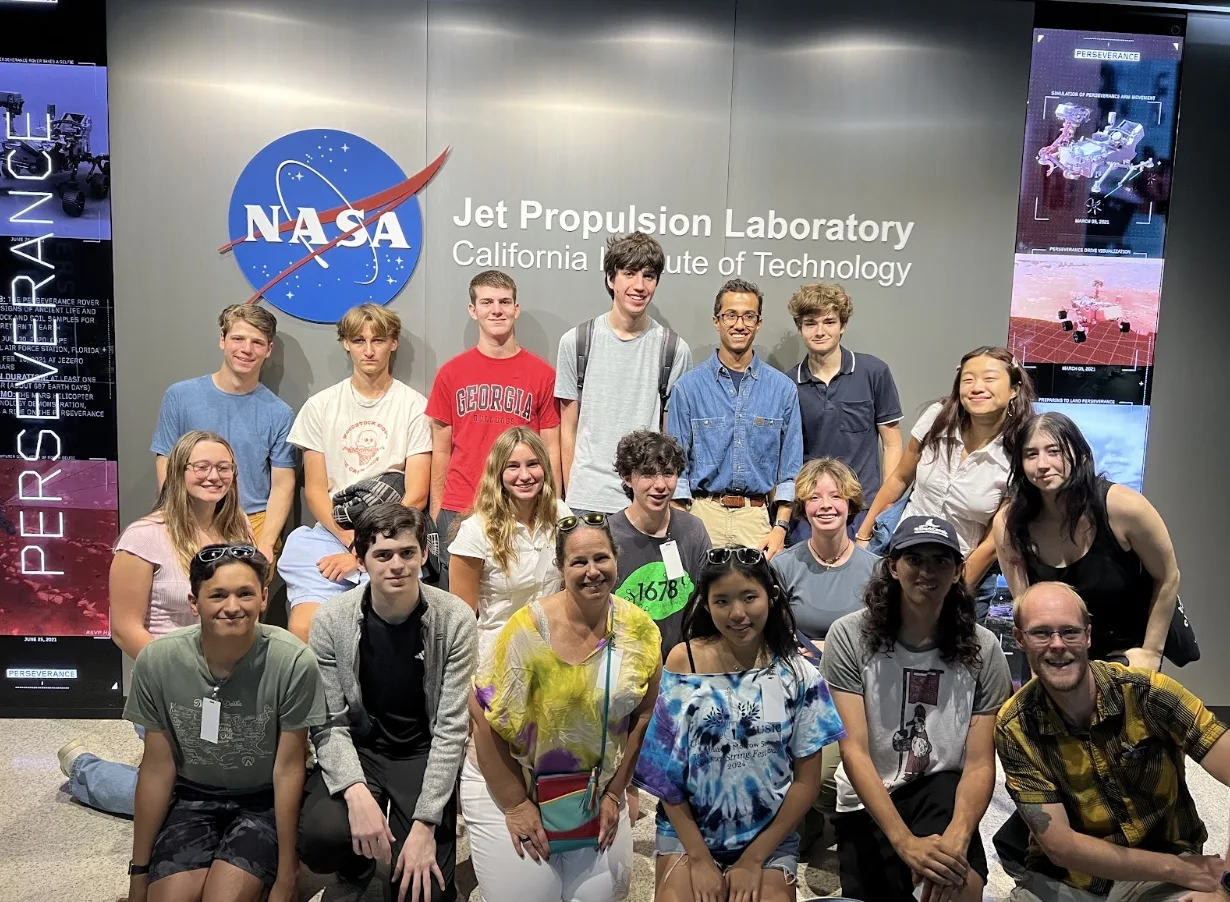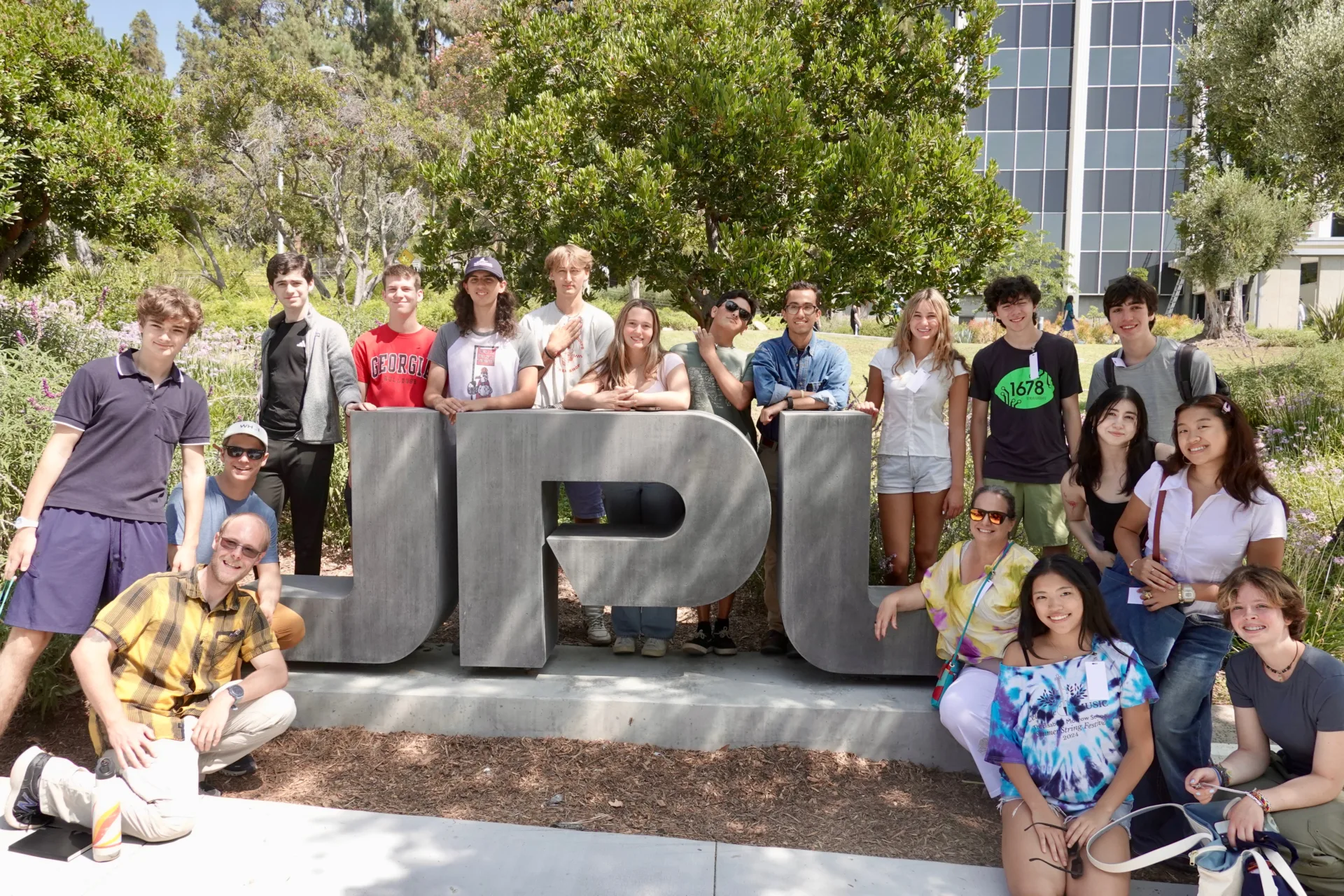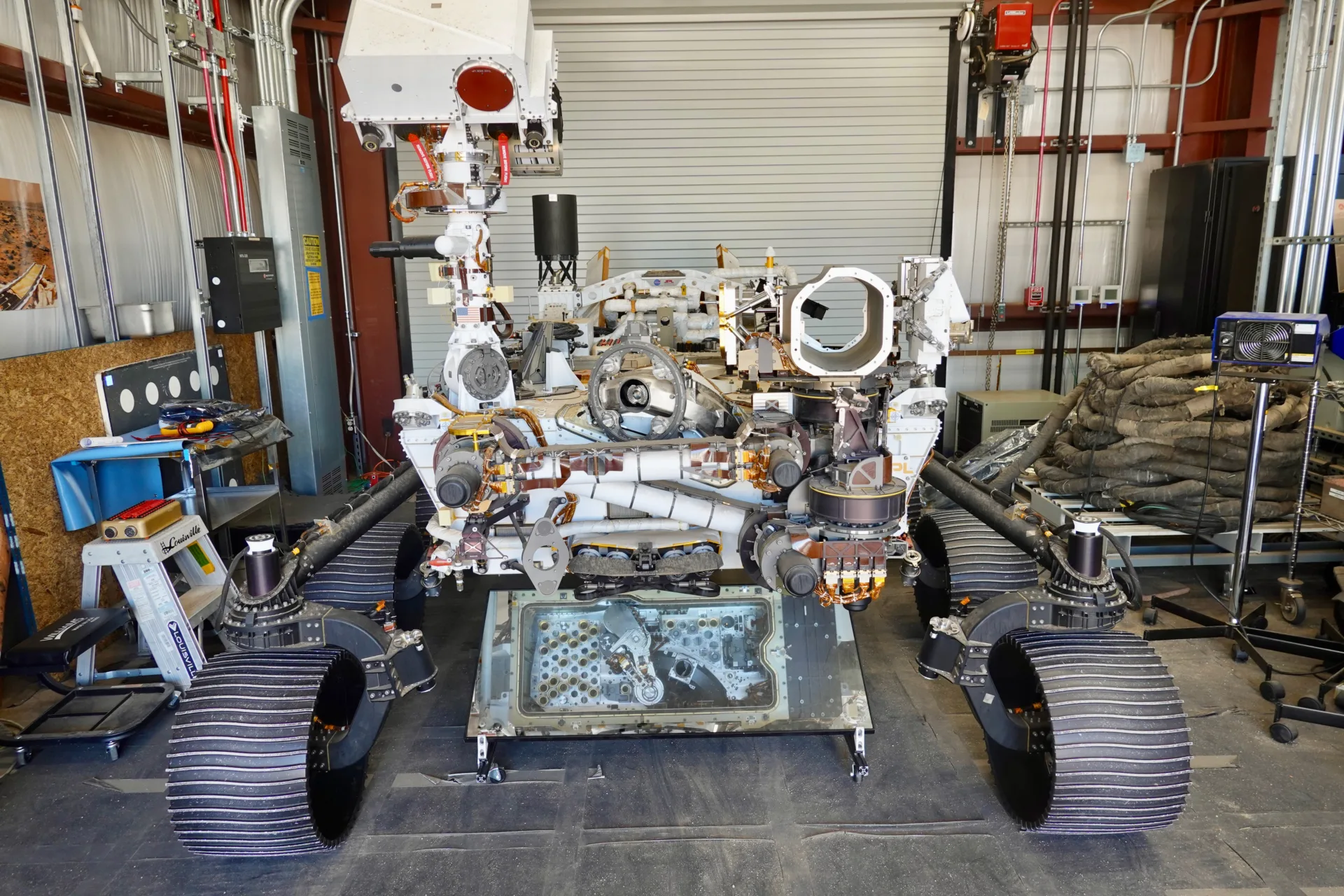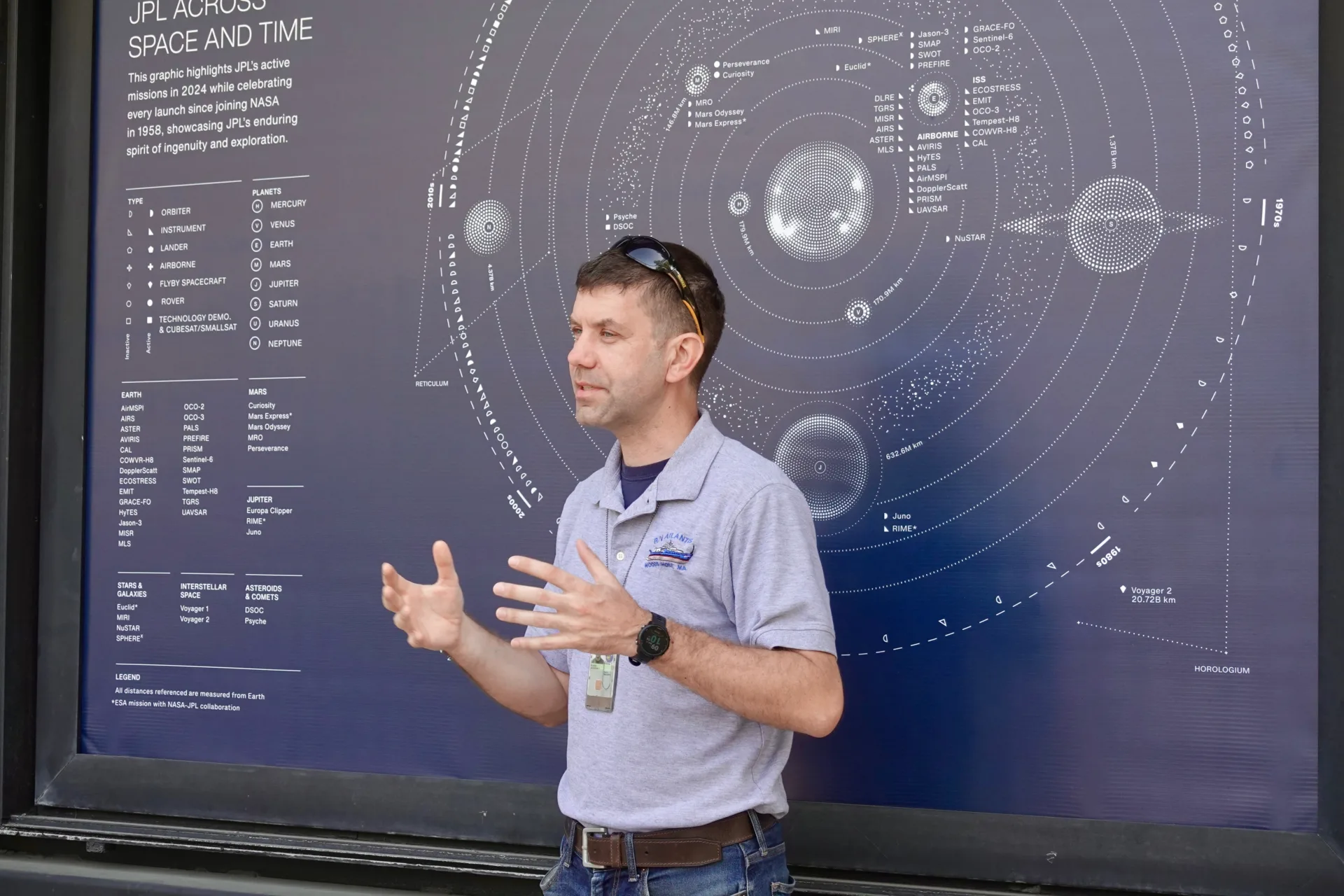Programs Blog
A Visit to the Jet Propulsion Lab!

August 12, 2025
We started our second day at Cal Tech exploring NASA’s Jet Propulsion Laboratory (JPL). After a quick breakfast, we boarded a bus and set out for the facility nestled 20 minutes away in the mountains northeast of Altadena. After going through ID checks and waiting for our guides to arrive we passed through the security checkpoint and into the massive mountain campus that is JPL. Dwarfed by large concrete offices and college campus esc squares, we made our way to a large map where we were introduced to our guides.
The first were our guest scientists, Brandon Rodriguez, a CalTech geochemist, Andy Klesh, a JPL mechanical engineer, and Chris, a JPL Physicist. Each of them represented a phase in the design process. Brandon explained how they determined a mission parameter for a spacecraft to fulfill, Chris explained how spacecraft are designed, tested and iterated upon, and Andy explained how equipment is fabricated and finally delivered to its interstellar destination. Having all of these people to visualize their own place at JPL showed how incredibly multidisciplinary engineering and science can be. Specialists from every field contribute to create a cohesive team. We hope to use this as a template for how to build cooperation on the Corwith Cramer.
There was a lot to see at JPL, and even more to learn. We’ve picked some of the highlights of our visit to share here. The first is the replica of Explorer I, the first US spacecraft to orbit the Earth and the first scientific spacecraft. From it we learned about some basic spacecraft design and the history of spaceflight, which we continued discussing into the press room. Surrounded by replica spacecraft, we walked through the same room where so many of those missions and their discoveries were announced, learning about the design and engineering behind craft like Voyager, Cassini, and Galileo.
From there, we headed to the high bay where we saw the ASTHROS mission in the final stages of assembly, and learned a lot about the tools and methods used at JPL and the constraints and challenges of space exploration. We looked at several unique solutions to these challenges, some of which are used on the ASTHROS mission. Afterwards, we took a very long and painfully sunny walk across the campus to the Mars yards. The Mars yards are the testing grounds for the Mars rovers, where replica rovers are driven on artificial terrain to test their limits before pushing them on Mars. Here engineers meticulously break “twin” rovers to simulate real damage on mars and allow problem solvers on earth to test what solutions might work for their counterparts on mars.
All of our guides had a hand in the rovers’ designs and were able to explain and demonstrate a number of parts, tools, and unique design features. This taught us a lot about how design works at JPL and the work involved in the continued operation of a mission, something we continued on after another trek under the California sun to mission control. This was where we learned about the digital side of space exploration. We learned about how mission data is transmitted, processed, and analyzed and the challenges of operating a spacecraft. We saw a few more points of interest along the way, but we don’t have space to list them all, so this is only the highlights. After touring mission control, we ran out of time on the tour and had to leave, but not before grabbing some souvenirs on the way.
Beckett and Ethan
P.S.
Beckett: JPL was the best destination of our trip so far. Mom and Dad, I love you more than anything and I miss you greatly. I can’t wait to see you both, Sisi, Mazie, and Addie very soon.
Ethan: JPL was a blast! I can’t wait to put what I learned to use building the robot. Shoutout to the Falmouth High School’s robotics team, 10254 the Regal Seagulls!



Recent Posts from the Ships
- Ocean Classroom 2024-A collaborative high school program with Proctor Academy
- Collaborations and Long-term Commitments: SEA’s Caribbean Reef Program Sets a Course for Coastal Programs that Compliment Shipboard Experiences.
- Sea Education Association students prepare for life underway using state of the art nautical simulation from Wartsila Corporation.
- SEA Writer 2022, Magazines From the Summer SEA Quest Students
- Technology@SEA: Upgrades Allow Insight into Ocean Depths
Programs
- Gap Year
- Ocean Exploration
- High School
- Science at SEA
- SEA Expedition
- SEAScape
- Pre-College
- Proctor Ocean Classroom
- Protecting the Phoenix Islands
- SPICE
- Stanford@SEA
- Undergraduate
- Climate and Society
- Climate Change and Coastal Resilience
- Coral Reef Conservation
- Marine Biodiversity and Conservation
- MBL
- Ocean Exploration: Plastics
- Ocean Policy: Marine Protected Areas
- Oceans and Climate
- Pacific Reef Expedition
- The Global Ocean: Hawai'i
- The Global Ocean: New Zealand